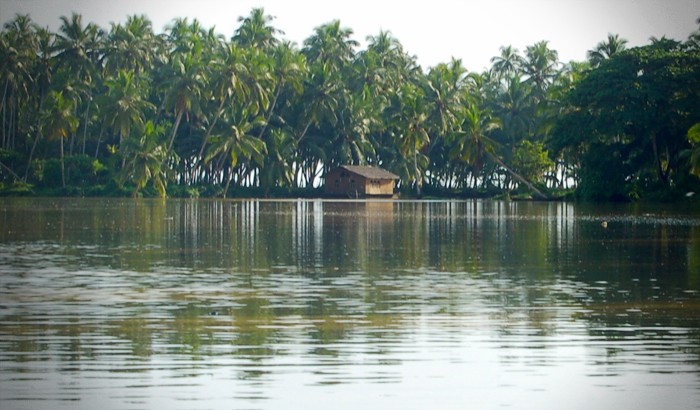This is more or less the story of all rivers in India. Rivers are considered as resources and mere commodities to be utilised and looted for their water, sand and fish without taking into consideration their natural flow and the ecosystem they support. Dumping of garbage, industrial effluents, wastewater and sewage adds to a river’s woes.
Water doesn’t just flow continuously from taps and pipes. City dwellers often forget that. Rather than set aside huge amounts of money and resources to clean up a polluted river, the effort is better spent on preventing this pollution.
Religion World will look at the rivers that call for immediate attention, because they have been polluted beyond repair. But the effort is to look at the river, its history, its use and how it was been brought to the state it is now. Our effort to write about these rivers is to enlighten the readers that they need attention and they can once again turn into lifeline for human race in their part. Today we bring, river flowing through Thiruvananthapuram, Karamana River.
Karamana River:
Karamana is a river flowing through the city of Thiruvananthapuram in Kerala, India. The river starts near the southern tip of the Western Ghats at Agastyar Koodam. The river flows 66 km westward and merges with the Arabian Sea at Panathura near Kovalam. The river gets its name from Karamana, a suburb of Thiruvananthapuram city, through which it flows.
Karamana, the pride of Thiruvananthapuram and an important source of drinking water for the city, is now dreaded and diseased. Parts of the river have been closed to residents now because they are so polluted. What was once a thriving river is now being used as a garbage dump.
Origins & Vegetation
The Karamana originates from the Agastyarkoodam mountains located at the southern tip of the Western Ghats. It then flows 68 kilometres westward and merges into the Arabian sea at Thiruvallam. Thiruvananthapuram, the capital of Kerala, lies fully within the 702 square km area that the river encompasses. The river is an important water resource to meet the domestic and drinking water needs of the population in Thiruvananthapuram city.
A wide variety of tropical plants including wild cane, bamboo and water lilies are found along the river bank. The cerbera odollam, called othalam in Malayalam, is found along the lower reaches of the river. Different varieties of fish including karimeen, chekkaali, kariyida, pruminali, cherumeen and vaala are found upstream and nedumeen, aaral, maalavu, paaval downstream in the river.
The catchment area is mostly forested, command area is under mixed dry land crops such as coconut, tapioca, pepper, plantain, rice, etc.
Tributaries
The Karamana rises in the vicinity of the Agasthiarkoodam about 1600 m above the sea level. The peaks of origin of the river are today known as Chemmunji Motta and Aathiramala and its upper tributary rivers are the Kaaviyaar, Attayaar, Vaiyappadyaar and Thodayaar. The river flows for 66 kilometers in a south – south west direction before flowing into the Arabian Sea. The largest tributary of the Karamana is the Killiyar, which flows for a distance of 24 kilometres. It has five anicuts on it which regulates the flow of water. Part of the water is diverted into the Kochar channel which in turn feeds the Padmatheertham pond outside the Padmanabhaswamy Temple. There are several temples located along the Killiyar’s banks, the most famous of which is the Attukal Temple. The Killiyar drains the Nedumangad forest and its basin is rich in avian fauna. The river merges with the Arabian Sea through the Pozhikkara estuary. In its final lap, the river runs parallel to the sea and the river here is known as the Edayar.
Dams
The Karamana river has two important dams where it originates from the Agastyarkoodam mountains. These are the Peppara dam built in 1983, which lies upstream, and the Aruvikkara dam located below and built in the 1930s. Both meet the irrigation and drinking water supply needs of Thiruvananthapuram city.
The 423m long Peppara dam unites all the upper tributaries of the Karamana river and regulates the water flow to the Aruvikkara dam. There is also a 3MW hydro-electric power station here. The dam has been built to control the flooding of the Karamana river.
Bridges over the River
The Karamana river has several bridges across it. The largest is at Karamana itself, where the NH-47 crosses it. This was built by Lt Col. Horsley, the author of the earliest English treatise on history of Travancore, and inaugurated in 1853. Other important bridges are at Thrikkunnapuram, Mangattu Kadavu, Kundamon Kadavu, Vellaikadavu, Aruvikkara (on the dam), Maruthoor kadavu.
The Stories Around the River
Charmed by the beauty of the river, royals, priests, believers and commoners made the bank of the river the site of many a palatial building and place of worship
The banks of the Karamana river was the locale of many a majestic building and temple. Although many residences and palaces, a part of our built heritage, has vanished with the passage of time, many places of worship still exist.
On the banks of the river is a beautiful palace – the Satelmond Palace at Mudavanmugal, which was the residence of Sethu Lakshmi Bayi, Maharani Regent of erstwhile Travancore from 1924-1931. It was later acquired by the government and it presently houses the Sree Chithra Thirunal Institute of Medical Sciences and Technology. Very elaborate padavus (steps) can be seen on the river bank inside the palace premises.
The Sree Sathyavageeswara temple is only one of the temples on the bank of the Karamana river. There are many more. Farther away is the Karamana Thaliyil Kshethram, where the scholars of the Kanthallor University are believed to have stayed. The Neeramankara Shiva temple on the way to the NSS College for Women and Arakath Devi temple in Kaimanam Idagramam are both famous temples around Karamana. It is dated to the 14th century AD and was declared a protected monument in 1940.
Thiruvallom Parasurama temple was built during the 12th and 13th century and is now a protected monument. It is famous for ‘bali tharpanam’ during the Karkidaka Vaavu day when devotees pay homage to departed souls after taking a dip in the Karamana river. It is known to be the only Parasurama temple in Kerala. It is believed that Adi Sankara offered ‘bali’ for his mother at this temple, which is believed to have been built by Chera King Athiyaman Perumal. The temple has separate shrines for Brahma, Vishnu and Shiva. It is now hailed as ‘Triveni sangamam’ of Karamana River, Killi River, and Parvathiputhanar, though the third one is barely 150 years old and at present makes the Triveni sangamam stink.
This temple has strong connections to Sree Padmanabha Swamy Temple. Legend has it that Lord Vishnu appeared in divine form with his head at Thiruvallam, feet at Trippapur (near Kazhakuttam) and torso in Ananthankadu (the present site of Sree Padmanabha Swamy temple).
The 800-year-old Thrivikramamangalam Mahavishnu temple overlooks the Karamana river and is famous for its rich stone sculptures. It was declared a protected monument in 1965. The Vishnu temple at Aruvikkara is also famous and a protected monument since 1966. Kundamankadavu has the Kundamankadavu Devi temple and Bhadrakali temple nearer to the bridge, which is currently planned to be widened and reconstructed.
The mosque at Palayam used to hold Kaduva kali during Muharram, at Panjappura, near Bakery junction. They used to go on a procession carrying the sacred crescent to the Karamana river. The Karamana Juma Masjid is also an important land mark of Karamana.

Ecological Issues
The Karamana has been facing the problems of pollution, acidification and fish kill in recent years. The causes for the deterioration in the river’s water quality include the discharge of untreated sewage and domestic and industrial effluents into the river and the unregulated development of tourism in the river basin area. This has resulted in the lowering of dissolved oxygen levels in the river’s water and caused fish kill downstream of the river. Illegal mining of river sand is another significant threat being faced by the river.
The Karamana river basin supports a range of plants that are typical of the tropics. These include the wild cane, bamboo, mangroves, water lilies and coconut trees. The screw pine or pandanus is another common species along the river’s banks. The Cerbera odollam, called Othalam in Malayalam, is found along the lower reaches of the river. Fish species found in the Karamana include Karimeen, Chekkaali, Kariyida, Paruminali, Cherumeen, Vaala, Nedumeen, Aaral, Maalavu and Paaval.
Pollution has led to the conversion of the river into a carrier of filth and diseases leading to environmental damage and increased the risk of public health hazards. Increasing attention is now being directed to the plight of the Karamana over the last few years. According to the latest news following World Environment Day, The Kerala State Council for Science Technology and Environment and the Kerala State Biodiversity Board have initiated proposals for integrated river basin management projects focusing on cleaning up and restoring the Karamana river.
Must Read #KnowYOurRivers : Noyyal River
Must Read #KnowyourRiver : Vaigai River









